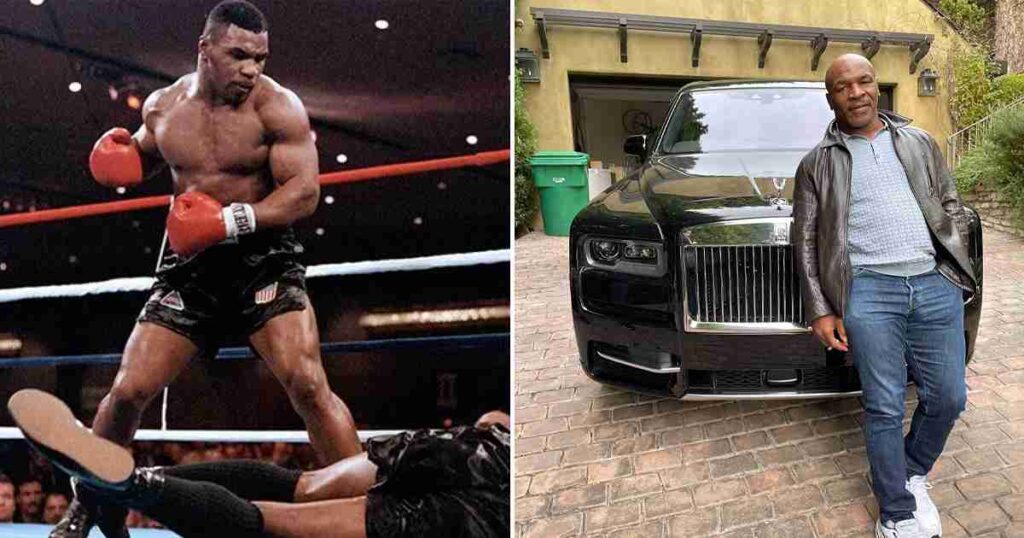The Mike Tyson Story: The Rise, Fall, And Resurrection Of The Legendary Boxer
Mike Tyson has been one of the biggest names in boxing for as long as one can remember.

Among all the fighters in boxing history, none have made such an dynamite impact as well as such a fearsome reputation to be called The Baddest Man on The Planet. Even when compared to legends like Muhammad Ali and Joseph “Smokin’ Joe Frazier,” Mike Tyson is undeniably regarded as one of the greatest heavyweight boxers of all time. Born on June 30th, 1966 in Fort Greene, Brooklyn, New York and raised in Brownsville some years later, Tyson endured a life a rough upbringing, to say the least.
After officially retiring from his professional boxing career in 2005, the most controversial fighter on the planet had competed in 58 fights, 50 of them which he won, 44 which came by knockout, and 6 losses. While his boxing record may not be as flawless as that of Floyd “Money” Mayweather’s winning streak and 0 losses, he has nonetheless etched himself into history as a formidable opponent during his prime. With that being said, let’s take a closer look at the rise, fall, and resurrection of the boxing legend, Mike Tyson.
Rising Against All Odds
Similar to many celebrity fighters and Hollywood stars who endured unbelievable hardships before gaining their acclaimed fame, “Iron Mike” also has a backstory that had all the odds stacked against him. From having a mother who was promiscuous, an absent biological father, a step father who was a pimp, and being raised in the rough and rugged environment of Bedford-Stuyvesant in Brooklyn, New York, all the ingredients were in place for the making of a dangerous criminal mind. And he was well on his way to becoming just that. By the age of thirteen, he has been arrested an estimated 38 times for theft and other petty crimes, according to Boxing Highs. Needless to say, he wasn’t a calculated career criminal or drug dealer like we hear some hip hop rappers brag about in their songs.
Following the spate of seemingly never ending arrests, Tyson was sent to a boy’s detention center in Johnstown, New York. It was at this moment when his life would change drastically after meting Cus D’Amato, his future boxing trainer and adopted father. D’Amato was astounded by the raw, pure power Tyson possessed and, together with his boxing experience and technical training advice, he would go on to take the boxing world by storm, receiving his first gold medal at the Junior Olympics in 1981 after defeating Joe Cortez and again in 1982 after defeating Kelton Brown. His ferocity as a fighter was put on open display during both those fights, winning by first-round knockout at only fifteen years old. But tragedy would soon follow his triumph as one year later, Tyson would learn of his mother’s death. With nowhere left to go and no family to turn to, D’Amato became the legal guardian and mentor for Tyson.
An Early Rise To Fame
At only the age of 18 in 1985, he made his professional debut fight against Hector Mercedes which he won by TKO in the first round. Even though “Kid Dynamite” spoke with a lisp and was nowhere close to being an outspoken boxer like of Tyson Fury, he was being regarded by the boxing world as the next boxing sensation on his way to stardom. But unfortunately, tragedy would strike yet again when his trainer and guardian, Cus D’Amato died that same year.
The untimely loss had a devastating effect on Tyson, despite going on to win 26 of the 28 fights he had by knockout, 16 of which were in the first round. By the age of 20, the ferocious fighter was offered a title shot against Trevor Berbick for the heavyweight WBC belt, which he won by second-round knockout, making him the youngest heavyweight champion in boxing history, a record which he still holds today. He then went on to defend his title against James Smith in 1987, which he did successfully. The “peek-a-boo” style of defensive boxing he learned from D’Amato coupled with his explosive punching power led him to rake in a slew of victories against names like Marvin Frazier, Mitch Green, Tony Tucker, among others.
By the time Tyson was ready to fight Alex Stewart in 1987, he signed a $27 million deal with HBO which would guarantee him eight fights. Some of his contenders included Tyrell Biggs, Michael Spinks, and Larry Holmes according to Mike Tyson’s records and stats. Following that contract, he would sign another long-term contract, this time with Showtime PPV, for $120 million, according to Celebrity Net Worth. For his victory over Tyrell Biggs, Tyson received a purse of $2.5 million, another $20 million for Michael Spinks, and $5 million for Larry Holmes. But despite the sumptuous payday, the loss of Cus D’Amato would begin to have its effect as Tyson’s career took a dramatic downhill spiral.
Falling To Rise Again
Without the proper guidance from his beloved trainer and adopted father, Cus D’Amato, Tyson began making poor decisions in terms of his career and personal life. His first loss came in 1990 against James “Buster” Douglas when he fought in Tokyo, Japan. He failed to take Douglas seriously and grossly overlooked him, which ended with Tyson being dropped for the first time in his career in the tenth round. By this time, he had already fired Kevin Rooney, who had been responsible for the success of his career ever since the death of Cus D’Amato. Don King became his new promoter, and many people credit him for the bad management and eventual decline in performance for the once undefeated “Baddest Man on The Planet.” Aside from his athletic decline, Don King would also be help responsible for the mismanagement of his funds.
Over the course of his career, Tyson earned a whopping $430 million from fights and endorsements combined. And during the height of his career, he was making $30 million per fight! This was his purse per fight for both controversial bouts with Evander Holyfield. Talk about a life of luxury! But he potentially lost millions from his pay per view earnings because of the contract he signed with King, which promised King a 30 percent share of Tyson’s earnings. Such a large percentage for a promoter was illegal in the state of Nevada. Another reason his financial situation was exasperated was because of the IRS.
Part of the boxing champion’s financial strains were caused by his own volition. Having access to such large amounts of money with no one to properly guide your decision-making led to some outrageous purchases, such as $70,000 per tiger for his collection of Serbian tigers, $4.5 million on cars and motorcycles, $100,000 per month on jewelry and clothes, and other wasteful spending habits. One of the many mansions he purchased is now owned by rapper 50 Cent and boasts 21 room, a casino, and a nightclub. With those features, who needs to go out? Another one of Tyson’s most ridiculous purchases was a $2 million golden bathtub for his then wife, Robin Givens.
After years of reckless spending and bad financial management, the Iron Mike Tyson began getting his life back together. In July 2020, fifteen years after his official retirement in 2005, he announced an exhibition match against another retired boxing legend, Roy Jones Jr. Each fighter earned $10 million from the Pay-Per-View earnings. He also charges $75,000 for a two-hour personal appearance at parties and corporate venues. With a net worth of $10 million, it’s safe to say that while he may not be close to half a billion dollars rich, he’s living a contented life at 56 years old.
Credits: Akil Dathorne / TheRichest







Thanks for sharing. I read many of your blog posts, cool, your blog is very good.